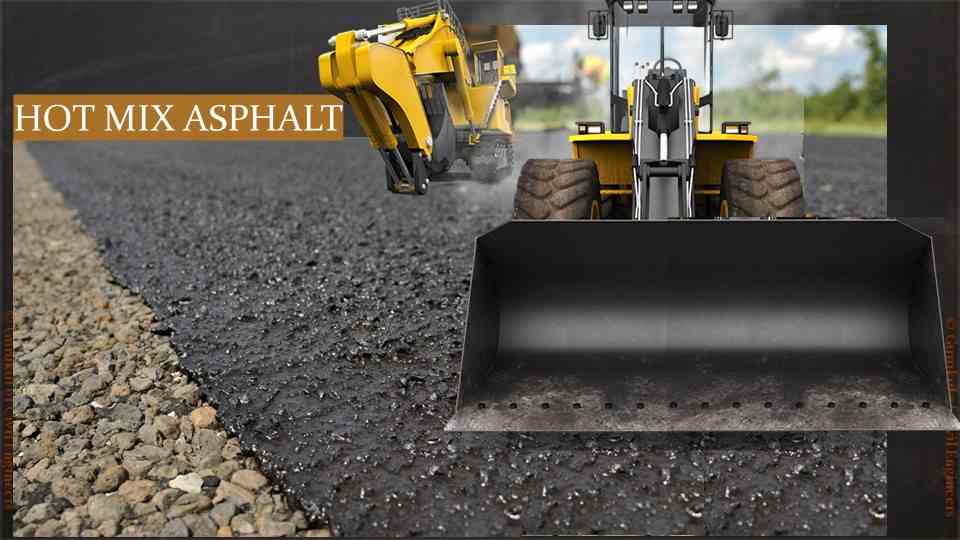Boost the Feel And Look of Your Property with Expert Commercial Parking Great Deal Paving
Boost the Feel And Look of Your Property with Expert Commercial Parking Great Deal Paving
Blog Article
Opening the Tricks of Hot Mix Asphalt Innovation
Checking out the midsts of hot mix asphalt technology reveals a globe where precise solutions and precise processes assemble to form our roadways and framework. The fusion of accumulations, binders, and fillers isn't just a construction job however a tactical orchestration of longevity and efficiency. As we peer into the detailed dancing of parts, a tapestry of durability and sustainability unravels. What lies below this surface of asphaltic proficiency, and what secrets wait to be introduced in the world of paving developments?
Importance of Hot Mix Asphalt
Hot Mix Asphalt plays an important role in modern-day infrastructure development because of its resilience and cost-effectiveness. As one of the most commonly used paving product for roads, highways, and auto parking whole lots, Hot Mix Asphalt uses a variety of benefits that add to its importance in building jobs. One crucial benefit is its capability to hold up against rush hour tons and severe climate condition, providing a trustworthy and long-lasting surface for transportation networks. In Addition, Hot Mix Asphalt is cost-efficient in both initial construction and long-lasting maintenance, making it a favored selection for lots of framework jobs.
The durability of Hot Mix Asphalt stems from its structure, which consists of accumulations, binder, and filler products that are carefully picked and blended to fulfill particular performance needs. This accurate combination leads to a solid and adaptable pavement that can withstand regular use without considerable damage. In Addition, Warm Mix Asphalt is 100% recyclable, more boosting its sustainability and environmental advantages. In general, the significance of Warm Mix Asphalt in facilities advancement can not be underrated, as it proceeds to be a foundation of modern-day building techniques.
Parts of Asphalt Mixes
The composition of asphalt blends is composed of very carefully selected aggregates, binder, and filler materials that are important for accomplishing specific efficiency needs. Aggregates are the main element of asphalt mixes, giving toughness and security. The binder, typically bitumen or asphalt concrete, holds the aggregates with each other and gives versatility and toughness to the mix.
The combination and proportion of these elements play a significant function in determining the top quality and performance of the asphalt mix. Engineers meticulously develop the mix to meet details needs, thinking about variables like website traffic volume, environment conditions, and sidewalk life expectancy. Correct option and balancing of accumulations, binder, and fillers are important for creating sturdy, lasting asphalt sidewalks.
Mixing and Manufacturing Strategies

Once the aggregates are chosen, the binder, usually asphalt concrete, is included in bind the materials with each other. The binder's quality and amount considerably influence the mix's resistance, toughness, and adaptability to environmental variables. Furthermore, fillers like hydrated lime or Portland concrete may be integrated to boost certain qualities of the asphalt mix, such as its workability or dampness resistance.
Throughout manufacturing, the aggregates and binder are heated up, typically between 250-325 ° F(121-163 ° C ), to promote blending and ensure proper finish of the aggregates. The blending procedure should be complete to achieve a homogeneous mix that promotes the desired efficiency features of the asphalt. Different techniques, such as set mixing or drum blending, are utilized to achieve constant and top quality asphalt mixes for construction projects.
Elements Affecting Asphalt Performance
Factors influencing asphalt performance encompass a variety of variables that influence the sturdiness, longevity, and overall top quality of asphalt pavements. One vital variable is the quality of products made use of in the asphalt mix. The type and source of accumulations, the binder quality, and the ingredients all play a significant function in determining the performance of the asphalt pavement. The gradation of aggregates is critical as it affects the mix's workability, resistance, and security to fracturing and rutting.

Environmental conditions also influence asphalt efficiency. Temperature level variants, moisture infiltration, and website traffic lots can all influence the structural integrity of the pavement. Design considerations, such as pavement density and drainage, are necessary in guaranteeing the long-lasting performance of the asphalt pavement. By next meticulously considering these elements, service providers and engineers can maximize asphalt performance and boost the life span of sidewalks.
Sustainable Practices in Asphalt Technology

WMA enables for the production and positioning of asphalt blends at lower temperature levels compared to standard hot-mix asphalt, resulting in decreased energy consumption and greenhouse gas emissions. The use of permeable asphalt mixes can aid alleviate stormwater drainage problems by allowing water to penetrate through the pavement and right into the ground, promoting all-natural water filtration and reenergize procedures.
Conclusion
To conclude, warm mix asphalt technology plays a crucial duty in modern-day infrastructure development as a result of its toughness and cost-effectiveness. By very carefully balancing elements, using proper blending techniques, and thinking about various elements, engineers can produce top quality asphalt mixes that withstand rush hour tons and extreme climate conditions. Accepting lasting click to investigate methods, such as utilizing warm-mix technologies and recycled materials, further enhances the ecological friendliness of asphalt modern technology.
Mixing and production methods in hot mix asphalt modern technology involve the accurate mix and handling of aggregates, binder, and fillers to create a sturdy and high-performance asphalt mix.Elements affecting asphalt efficiency encompass an array of variables that affect the durability, longevity, and total high quality of asphalt sidewalks. Sustainable techniques in asphalt modern technology encompass different efforts intended at decreasing the ecological impact of asphalt production and paving processes. By integrating redeemed asphalt pavement (RAP) and recycled asphalt tiles (RAS) right into new asphalt mixes, the sector can dramatically minimize the intake of raw products and energy, while additionally reducing garbage dump waste.
WMA allows for the production and placement of asphalt blends at lower temperatures contrasted to conventional hot-mix asphalt, resulting in minimized energy consumption and greenhouse gas exhausts.
Report this page